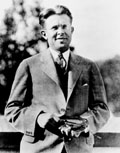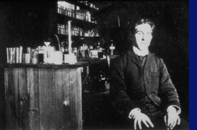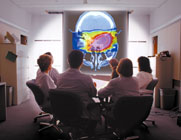
  iscoveries in physics have helped forge
dramatic advances in cancer treatment for over a century. In 1950-54, according to the National Cancer Institute, the five-year survival rate for all cancers was 35 percent; by 2000 it was 59 percent. With early detection and treatment, the five-year survival rate for screenable cancers is now 80 percent.
iscoveries in physics have helped forge
dramatic advances in cancer treatment for over a century. In 1950-54, according to the National Cancer Institute, the five-year survival rate for all cancers was 35 percent; by 2000 it was 59 percent. With early detection and treatment, the five-year survival rate for screenable cancers is now 80 percent.
 When Ernest and John Lawrence treated their mother�s cancer with radiation from their new cyclotron in 1931, they were experimenting just as others had with other forms of radiation. Within months of the discovery of X-rays in late 1895, therapists began treating countless ailments with Wilhelm Roentgen�s �new light.� By January of 1896, Emil Grubbe in Chicago
was already treating two cancer patients.
By trade, Grubbe was an electrician and metallurgist. When Ernest and John Lawrence treated their mother�s cancer with radiation from their new cyclotron in 1931, they were experimenting just as others had with other forms of radiation. Within months of the discovery of X-rays in late 1895, therapists began treating countless ailments with Wilhelm Roentgen�s �new light.� By January of 1896, Emil Grubbe in Chicago
was already treating two cancer patients.
By trade, Grubbe was an electrician and metallurgist.
 Now, accelerators producing X-rays, protons, neutrons or heavy ions
can be found at every major medical center in the U.S. —
planned and operated by medical physicists,
with treatment administered by radiation oncologists. Once an experiment, then a treatment of last resort, radiation therapy
has evolved into the treatment of choice for many cancers. Particle accelerators have an
integral role in today's cancer therapy.
Now, accelerators producing X-rays, protons, neutrons or heavy ions
can be found at every major medical center in the U.S. —
planned and operated by medical physicists,
with treatment administered by radiation oncologists. Once an experiment, then a treatment of last resort, radiation therapy
has evolved into the treatment of choice for many cancers. Particle accelerators have an
integral role in today's cancer therapy.
|